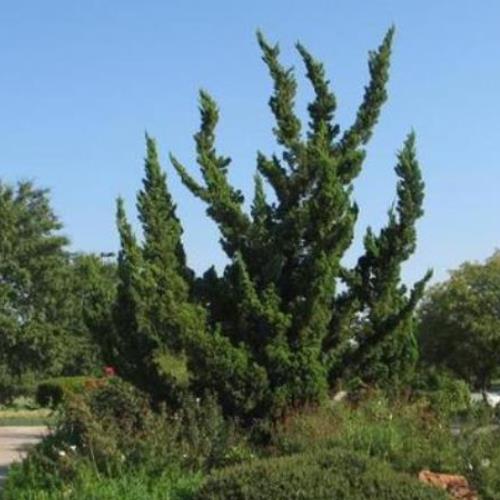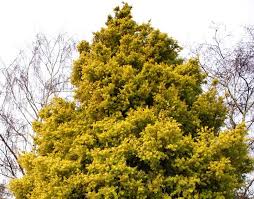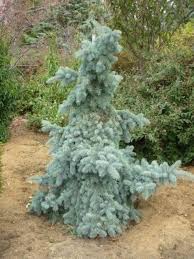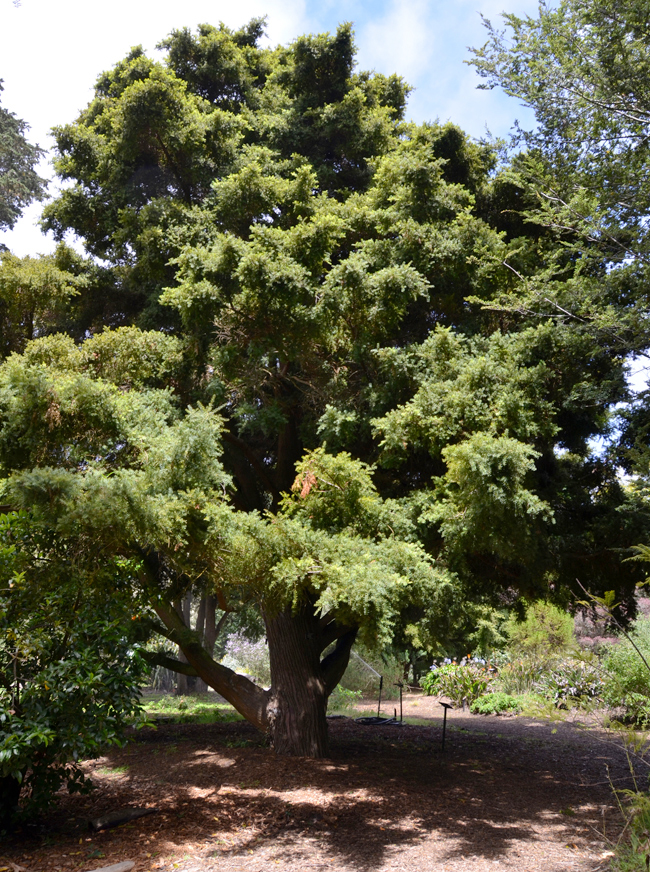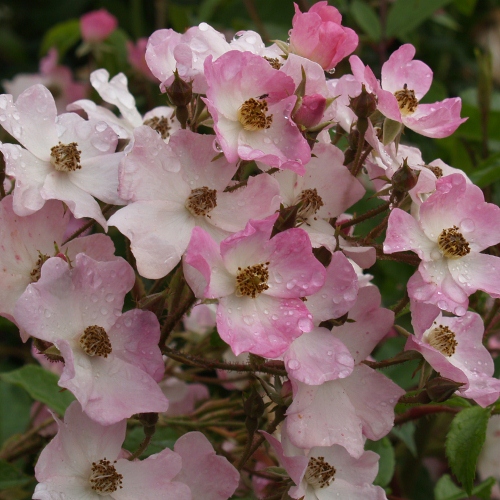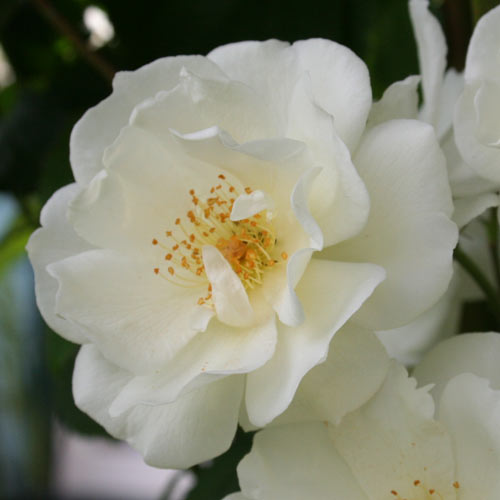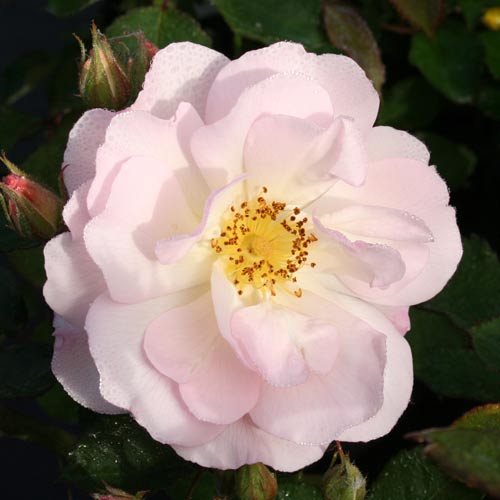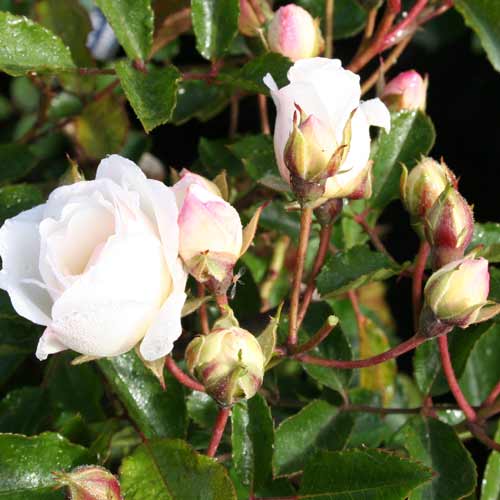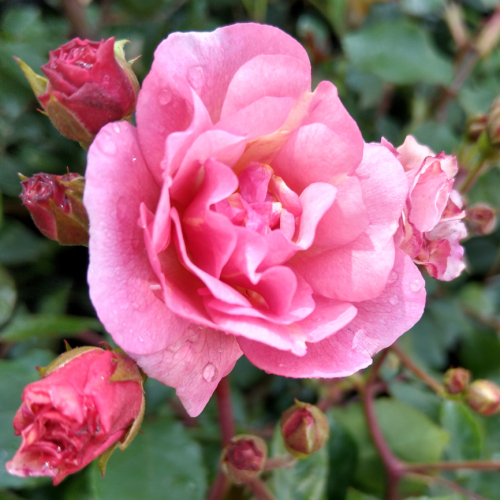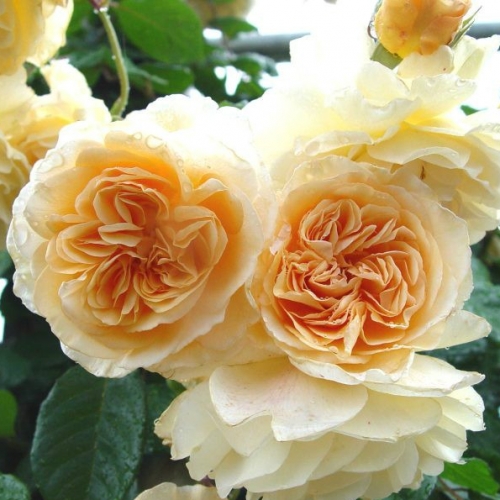Friday 10th July, 2020
Hi
Stick to the plan, cut to the framework!
WOW it sure feels like winter turned up this week! It has been so warm and pleasant for so long but, really, we did finally have to get some winter chill factor. Take it from me it's not that much fun potting trees with cold squally, wet weather happening around you but into bags they must go... we are now on a roll and a couple more weeks may have most of the busy annual event all but done
If you are looking out for your order and haven't heard from us then we may be waiting for some final trees to arrive which are due in next week.
Cloud trees... Dr Seuss Trees! it's all about the training and trimming
Last week it was all about pruning roses and the right cut and creating a frame work. That word pruning is really all about training... in roses it is for creating the right framework to produce flowers, in fruit trees an open vase or an espalier along the fence to crop fruit and it's not any different for the exciting world of topiary. Now I guess that most will associate topiary with the typical traditional standard form resembling a lolly pop but for me it's so much more.
We get a lot of comment and enquiry for instance about the cloud trees, often referred to by many as Dr Seuss trees, that we have created outside the nursery entrance and these are difficult to come by already created for you but, with the right pruning, you could easily create your own feature plant for that special place in the garden.
Now ours have been created using the Hollywood juniper or
Juniperus chinesis Kaizuka. The beauty of using this plant is that it lends itself to this type of training without really having to be tied down. Those quirky branches naturally twist and lean outwards and being of the conifer type also really suit being clipped. There are other plants that can be used for this form of pruning however such as our very own native Totara which you can get in
green,
gold or
blue leaf varieties.
The ones on the roadside, as you probably know, have been there quite some years so it's really all about maintenance these days, to keep them from getting any bigger, and so each trim it is ensured that it's back to the main structure.
Now if you have some patience, and a few years, its easy to train these yourself. I would suggest planting the Hollywood juniper and just letting it grow for a couple of years. This will give some time to develop some arms(branches ) that you can choose from.
For me it's all about the growing points, these are the very tip or ends of the branches. When I started to train these I had a picture in my head of what I wanted them to look like and I didn't want the branches starting at ground level so I removed all branches to a height of around 40 cm from the ground
Then I looked at the branches that remained, removing those too close together and trying to find ones that were opposite and then at intervals as we go up the main central stem. Then I removed all the green along the stem leaving at least a third to continue (the growing tip) to grow. I had this image, in my head, that the base needs to be much wider and a triangle shape, so I had to let the lower branches grow much longer. Once the desired length and height is reached, it is at that point that you would "tip" or remove the growing point. Once tipped the branch will start to bush out and you will then trim the growth to create the ball. Remember this all happens over time.
A few extra tips that I did when training mine... I left extra branches, or arms, on the tree so I had more choices on what to remove as I looked and reflected on the form that I was achieving. Also as the plant ages there is less room and it may suit to lose some filler branches at a later date. The other trick I did was leave some green on the longer stems as well as the growing tip, this allows more than one ball along the stem which can help make it look fuller when young but again could be removed as the plant ages. Final tip is that you can't put back once cut so this could be one of those times that you leave and reflect... this pruning/training is an art form so have fun.
What a cool project for the garden and after not having any of this, eminently suitable, conifer for absolutely ages we now have a great batch of really good plants.
Planting new seasons trees... a refresher for us all
New season trees are different from trees that are usually found in the garden centre in that they have not yet grown that all important root ball. Chances are, by the time a couple of week from now are past, that the root ball will have started growing lots of new white feeder roots. Treat these new roots carefully, I would suggest cutting the bag away and gently removing.
Don't use heaps of compost in the planting hole as this can absorb and hold lots of moisture in the winter season and the new feeder roots may rot.. Of course some compost is always good but use discretion as some soils are really sandy and need the addition of compost. I always like to plant in good crumbly topsoil when planting a new tree so break up the dirt from the planting hole and make it nice and fine. Use only slow release fert or tree bricks in the planting hole and make sure there is a good spade full of dirt between the tree brick and the tree roots to avoid root burn.
If you are unsure about compost then use this on top of the ground instead of in the hole but do not let it get built up against the stem.
Plant to the same depth your plant is in the bag, or look at the trunk and see the usually obvious point to where the tree has been grown in the ground. sometimes we can't get all of the length into a bag.
I also recommend staking all new trees that don't have an established root mass so that they don't get buffeted by the wind. Constant wind can keep breaking those feeder roots preventing your plant from getting away to a good start.
Looking good for the weekend, so get out there with the kids and have some fun... I'm thinking that the lawns are desperate for a mow and there are projects in the garden that I need to get done before the spring so busy, busy.
I have featured
Hybrid Musk roses as the theme for our pics this week as these roses are often overlooked but with their musky perfume, their excellent repeating characteristics allowing their simple beauty to be enjoyed from spring through to autumn. Well worth a spot in the garden.
Whatever your plans are, weather permitting of course, enjoy your gardens and have a great weekend.
Cheers Lloyd, Tony and the Wairere team.
